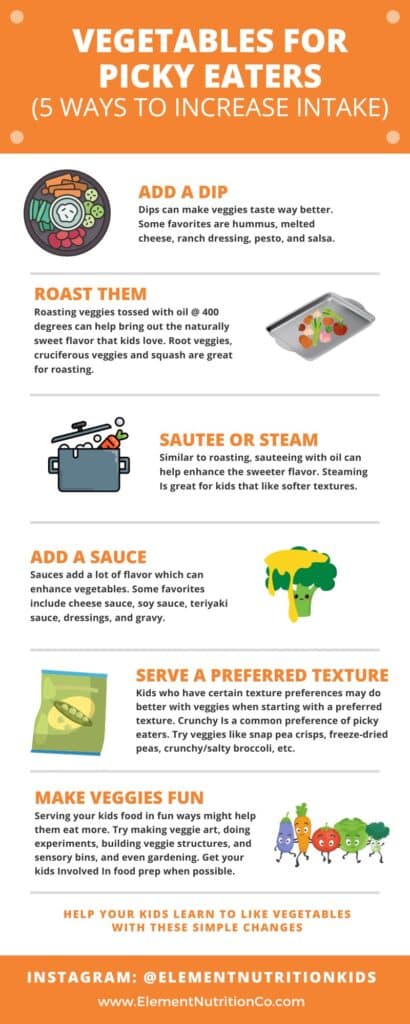If you have a picky eater at home (or any kid for that matter), they likely are not eating a whole lot of vegetables. According to a 2021 study by the Centers for Disease Control, 50% of children were not getting even 1 vegetable per day.
While there are many reasons some kids don’t get enough vegetables in their diets, picky eating is one of the top reasons. And, because vegetables (and fruit) contain many important vitamins and minerals kids need for growth, focusing efforts on increasing exposure to fruit and vegetables for picky eaters is important.
In this article, I’m going to discuss what you can do if your kids struggle with vegetables. Plus, I’ll include some of my favorite ways to make vegetables for picky eaters fun and more palatable so they can learn to love them (with time).

Please note that I am an affiliate for some of the linked products. If you click my affiliate link and make a purchase, I may earn a percentage of the sale at no extra cost to you. As an Amazon Associate, I earn from qualifying purchases.
Table of Contents
Why do kids hate vegetables?
Okay, it isn’t that kids HATE vegetables, it’s that they just haven’t learned to like them (yet). Before we dive into ways to help your kids learn to like vegetables, it’s important to understand why vegetables are not typically at the top of their priority list.
When we are born, we already have a strong preference for sweet and umami flavors and a reduced preference for bitter flavors. These preferences are likely biological, giving us a drive toward more calorie/protein-dense foods and an aversion to foods that may be “toxic or poisonous.” It’s how our bodies are wired.
Where do food preferences start?
Through repeated exposure, our bodies can learn to like and prefer different flavors. The mother’s diet during pregnancy may play a role in shaping what a child likes later in life. Because flavors are transferred in utero through the amniotic fluid, mothers who eat more vegetables provide early exposure to these flavors to their babies. This may improve their acceptance down the road.
A mother’s diet during pregnancy and breastfeeding can potentially play a role in whether or not her baby gains a reinforced love for sweet flavors or the more bitter flavors of vegetables.
Early and frequent introduction when starting solids is also important. Babies have a special “flavor window” between 4-12 months when they are most likely to accept new foods. Taking advantage of this time is one of the key ways to prime them for food acceptance throughout childhood. The food you serve your baby before they turn one is so important!
Want to make sure you’re offering your baby variety? Grab a copy of my “Foods to Try Before One” checklist to help you with ideas and to keep track.
Taste and sensory perception in kids
In addition to a stronger biological preference for sweets, Research also suggests that preferences may be driven by sensory perception. Children have a heightened sensitivity to bitter tastes and a weaker sensitivity to sweet tastes than adults. So vegetables actually taste more bitter to kids than to adults.
This sensory perception changes with age and bitter flavors become less intense as we get older. Since many vegetables fall into the “bitter” category, it makes sense why children don’t naturally prefer them. This is especially true of toddlers who often experience food “neophobia” or fear of food. If your toddler won’t eat, there are many things you can do to help them.
If you notice your toddler throwing food, which sometimes happens to be vegetables, keep in mind it might not be just because they “don’t like them.” Many parents confuse a dislike for food with other common toddler behaviors. So, keep offering!
Some people may be even more sensitive to the sulfur compounds in certain vegetables (like cauliflower, broccoli, and cabbage) than others, even into adulthood. Because of this, you may find your “picky eater” never really learns to love certain foods or that if they do, it takes them much longer than others, so be patient. Isn’t our unique chemistry amazing?
Best vegetables for picky eaters (and kids in general)
The “best” vegetable to serve a picky eater is really going to vary from kid to kid, so there is no perfect answer here. However, for kids who struggle with the flavor of vegetables, serving ones that are naturally sweeter can be a good gateway and confidence builder.
- Roasted carrots
- Raw baby carrots
- Raw mini sweet peppers
- Roasted sweet potato
- Sweet potato fries
- Whipped sweet potato (even with a little maple syrup)
- Corn on or off the cob with butter
- Roasted butternut squash
- Roasted acorn squash
- Cucumber
You can also find ways to serve different vegetable versions of foods they already love. Example: sweet potato tots vs regular tater tots to add in a new spin. Making these little changes opens up the opportunity to get more comfortable with variety which is a step in the right direction.
Veggies for picky eaters that prefer crunchy foods
I find that sometimes kids really prefer specific textures of foods over others, especially kids with higher sensory needs. Finding vegetables that you can serve that meet their texture preference can be a good place to start.
“Crunchy” foods are one of the more commonly preferred textures by picky eaters. Using their preferred texture is often a gateway to getting them more comfortable with eating veggies in different forms down the road. Baby steps 🙂
Top crunchy vegetables for picky eaters
- Crunchy snap pea crisps
- Root vegetable chips
- Freeze-dried peas
- Roasted seaweed sheets
- Kale chips
- Beet and yacon chips
- Carrot sticks
- Broccoli bites
Your child may prefer a different texture, focusing on the types of veggies that are the texture they prefer can help. I also like to offer vegetable sensory trays that have a variety of colors and textures which may peak their interest.
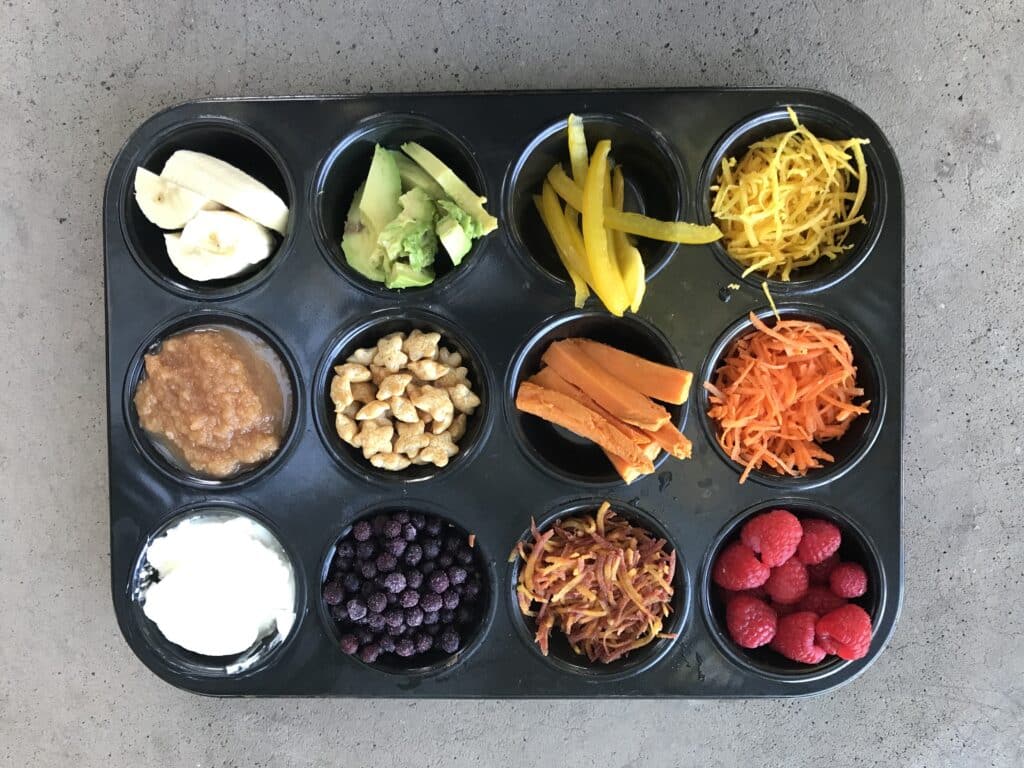
How to make vegetables taste good for kids
The best way to improve the flavor of vegetables and make them more enjoyable for kids is to add something to them. Most raw vegetables on their own are not popular with kids, so adding a source of flavor increases their palatability.
1. Add a dip
Dips are one of the easiest ways to add flavor, you can buy them or make them homemade and there is a never-ending supply of dip recipes on the internet. Not all kids are going to like all these dips, so try some out.
You could even do a fun “dip tasting” experiment. Use a veggie tray, add various dips to a muffin tin, and let your kids try out different dips. Have them give a thumbs up or thumbs down and then keep track for next time.
Best veggie dips for kids
- Ranch dressing (a classic)
- Salsa (mild for most kids)
- Bean dip
- Melted cheese dip (fondue anyone?)
- Hummus
- Baba Ganoush
- Tahini
- Avocado Pesto
- Honey mustard
- Cream cheese or cream cheese & salsa
- Cottage cheese
2. Roast them
Roasting veggies (drizzled in oil) in the oven at 400 degrees brings out the natural sweet flavors of the vegetables and makes them less “pungent.” I love using olive oil or avocado oil when I cook vegetables because the addition of fat helps the body more efficiently absorb the fat-soluble vitamins present in the vegetables.
Be sure not to overcrowd your pan when roasting veggies. They need to be in a single layer and separated to be able to roast well.
Best veggies to roast for kids
- Root vegetables (carrots, potato, sweet potato, parsnips)
- Cruciferous veggies (broccoli, cauliflower and even brussels sprouts)
- Squash (butternut, acorn, spaghetti squash)
3. Sauteed
Similar to roasting, sauteeing veggies on the stove in oil can help bring out the sweeter flavor and also enhance the absorption of the fat-soluble vitamins. I love making stir fry at the end of the week with a combo of veggies that I have left. It’s an awesome way to prevent food waste by using up what you have in the fridge.
4. Steaming
This one might surprise you, but if you have a kid who likes softer textures, steaming might be the way to go.
The vegetable that both my kids like and eat most consistently is steamed broccoli. This is likely because it’s the vegetable I cooked most often since they were babies. Further supporting the idea of repeated exposure.
If your kids are sensitive to smell, be sure to cook in a well-ventilated area (windows open) and let them cool slightly before serving.
I also find that a small squirt of lemon adds an enjoyable flavor to broccoli.
5. Add sauce
A lot of parents are hesitant to add sauces to veggies because they think adding sauce makes them “unhealthy.” However, I assure you, adding something doesn’t magically erase what is already there. Besides, if the goal is to foster a long term love for veggies, you have to start somewhere and sauce is a great way to start.
- Cheese sauce (#1 pick for kids)
- Soy sauce
- Teriyaki sauce
- Green goddess dressing
- Pesto
- Gravy
BONUS: Make them fun
Okay, this tip is less about the “preparing” and more about the act of making them more enjoyable physically.
Kids learn through play, in most areas of life. When something is fun, it might also be more enjoyable. So the more you can incorporate vegetables into play/learning the more likely they are to learn to have a positive interaction with them. Over time, this may lead to eating. (This still takes time, of course, so manage your expectations here.)
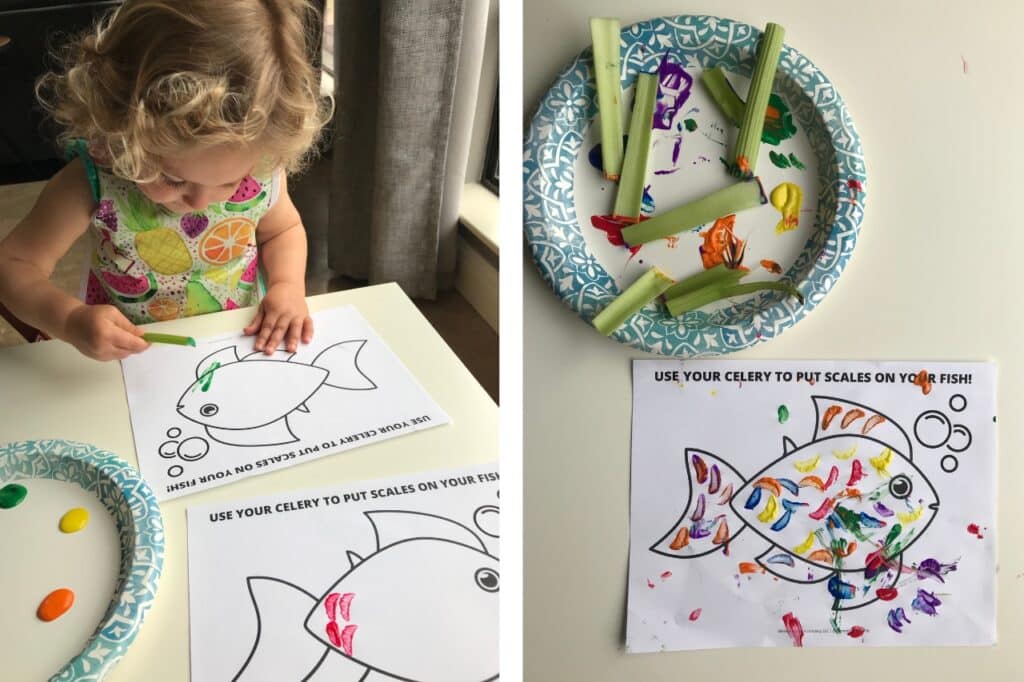
15 ways to make vegetables for picky eaters fun
- Use veggies for art projects (painting is fun!)
- Vegetable experiments
- Build veggie structures (with toothpicks)
- Veggie tic-tac-toe
- Have them help you cut/prepare the veggies you cook
- Read about veggies (books)
- Take them to the store/market and talk about the colors/shapes
- Sort vegetables by color or shape into bowls
- Plant a garden and have them help maintain it from start to finish
- Create a sensory bin with vegetables inside (fresh, frozen freeze-dried)
- Make a real Mr. Potato Head
- Build a rainbow fruit/veggie skewer
- Vegetable math
- Vegetable cleaning bin (add veggies to a tub of water, have them scrub them)
- “Write” with veggies (use a carrot & paint to practice letters)
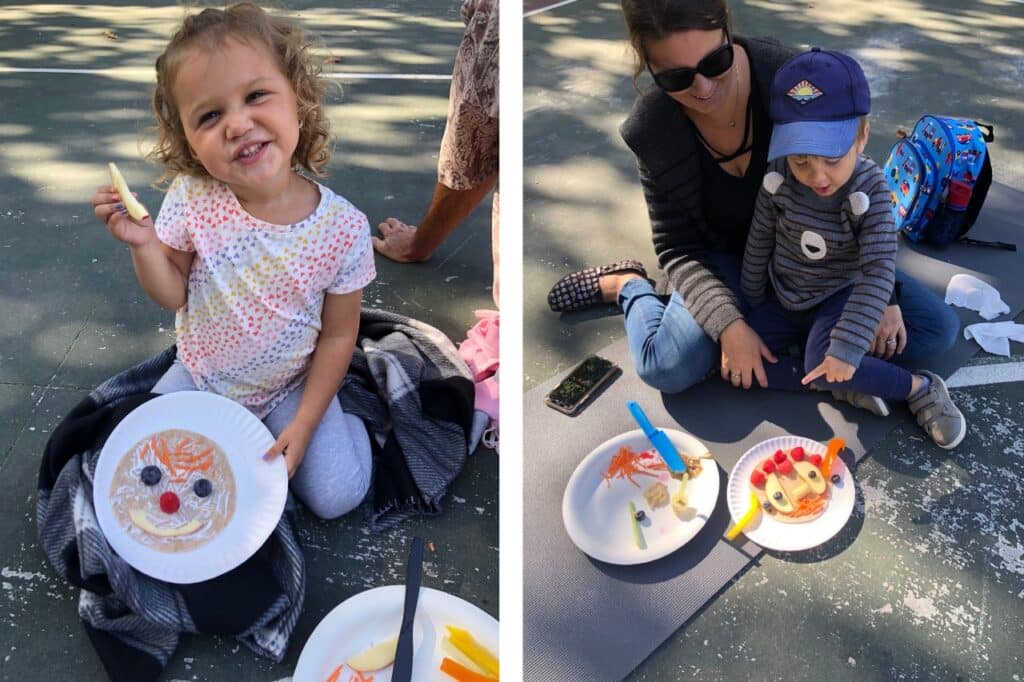
Increase intake of vegetables through role modeling
The last (and maybe most important tip) in improving vegetable acceptance by your kids is role modeling. Your kids, especially little ones, learn through watching you. It might not seem like a big thing, but little eyes are always watching.
So enjoy the vegetables you want them to enjoy (and all the foods for that matter). Don’t be afraid to be silly with them either. Toddlers and preschoolers really do like to see who can make their broccoli tree the loudest.
Hidden vegetables, are they a good idea?
Something that comes up a lot when I work with parents in my private practice is the idea of “hidden vegetables.” They want me to give them recipes to help them hide veggies so their kids will eat them.
This is a really tricky topic!
Research has shown that “hidden vegetables” in kids’ food (they don’t know it’s there) may in fact increase their consumption of the vegetable. However, this did not prove to actually increase their liking of the vegetable or their acceptance of the vegetable in its whole form.
Additionally, some research also suggests that hiding food in other foods may actually break trust and cause more harm than good if the child finds out.
So, should you not make recipes that have vegetables in them? Not exactly! In fact, I love a good veggie-boosted recipe. I just recommend not going into it with the mentality of hiding. Be open with your kids about what is in their food and have them help you make it if possible.
In fact, having them help you prepare it, where they see the vegetable going into it, and then liking the taste, might actually form a positive perception of the food. This may open the opportunity to try it in whole form later.
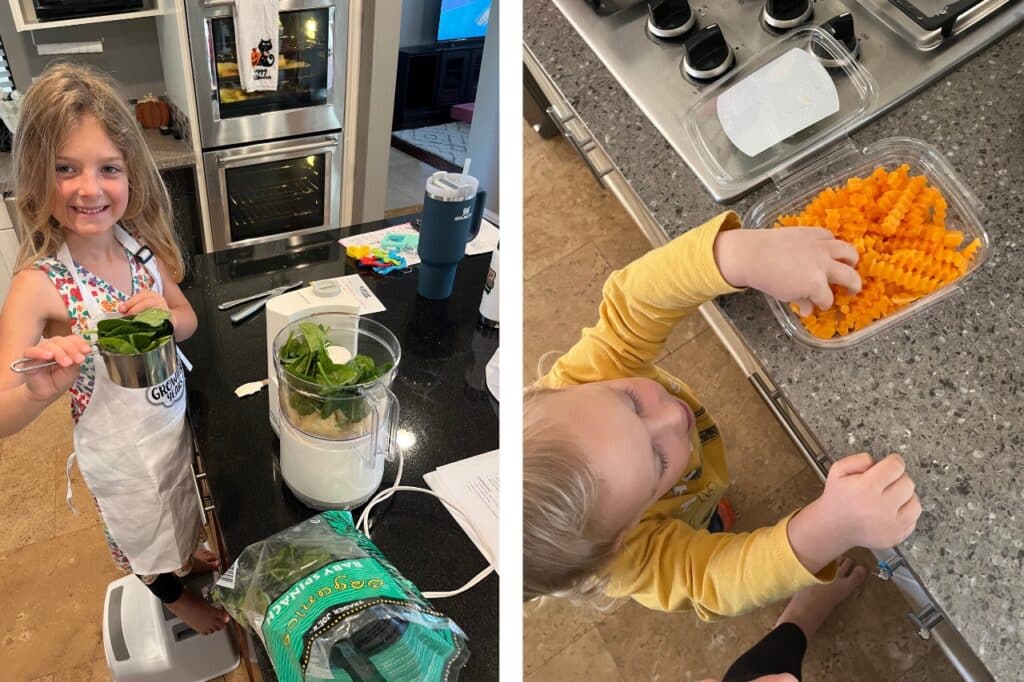
In Summary
Having a picky eater at home can be really frustrating as a parent. We desperately want them to try and enjoy a wide variety of food. We want them to eat the things we make and we definitely don’t want the stress that can easily come when they’re not happy with what they see on the table.
However, it is important to remember that it is not your job to make your child eat. That is their job. And, if we are following positive feeding practices, we can do our job as parents while honoring their job as the eater.
It is our job as parents to help our kids learn new things. We can do this by the environment we provide. When it comes to vegetables, we have to provide regular, non-pressure access in order for them to have the opportunity to learn.
There are many ways we can support them in enjoying the flavor of vegetables by altering the way we prepare them and pairing them with foods they already like (dips, sauces, etc.) And, we can also provide them opportunities to engage with vegetables in a fun way, which increases positive exposure and provides learning opportunities.
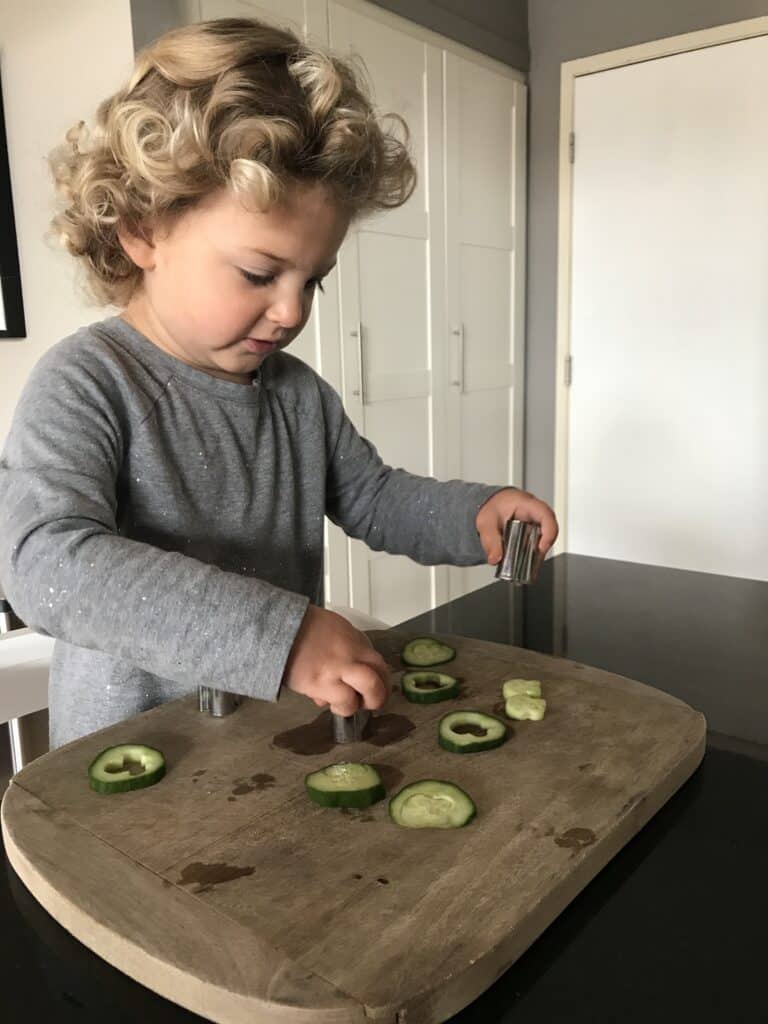
Research has shown that repeat exposure to foods and flavors is one of the best ways to improve acceptance. What research really can’t prove is how many exposures it takes to get them there. This is going to vary by the food and the child. So be patient and keep your expectations realistic.
My number one piece of advice for parents who struggle with picky eaters is to view eating through a wide lens. It is a marathon, not a sprint. Each and everything you do right now in the way you support your child, talk to your child about food, and provide them exposure is creating healthy habits which build over time.
The ultimate goal is to raise adults with a positive relationship with food. How we address feeding with our kids right now is how we get them there.
I hope you found this article helpful. If you did, I’d love for you to share the link with a friend who might find it helpful too.
If you need more support with nutrition and feeding your kids, I’d love to work with you. You can schedule a 1:1 consultation with me here. As a Pediatric Dietitian and mom I am passionate about supporting other parents in helping their kids grow into healthy eaters for life.
